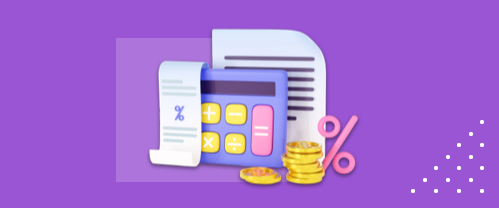ASC 606 Solutions
In 2002, the IASB and the FASB undertook a project to standardize their respective revenue standards under ASC 606 and IFRS 15 . The standards (effective as of 2022) replace virtually all previous accounting guidance on revenue from contracts with customers and have created a new unified model to determine how revenue is recognized.
The new guidance requires the deferral of certain costs of obtaining a contract. Sales commission is the most common contract cost companies must consider when adopting these new standards. While many companies previously recognized these expenses immediately, the new guidance means that many companies now need to defer recognition of their sales commission expenses.
Schedule Your Demo Today!
Spiff is the only commission expensing automation platform.
If your organization is manually tracking sales commission or using legacy systems for reporting purposes, this may lead to major compliance challenges when it comes time to audit and it may even slow down your financial close process.
Taking commission calculations from one system, properly allocating amounts for accounting, and then putting them into another system is time consuming and prone to human error.
Spiff is the only Commission Expensing tool that can serve as the single source of truth for your commission accounting needs. Spiff automatically pulls data from your current systems and applies the correct commission and accounting rules. With just a few clicks, Spiff creates an audit-ready report that you can summarize and filter with full drill-down capabilities.
Spiff’s powerful web UI allows you to pivot or restructure your data presentation with full exporting capabilities. This reduces human error and enhances the accuracy and efficiency of your accounting teams.
Here are some key features:

Other Key Features:
Let’s take a look at the other features within Spiff that make commission expensing under ASC 606 a breeze.
- Flexible account chart
- Standard Asset, Liability, & Expense accounts
- Separate accounts for practical expedient accounting
- Optional support for fringe benefit accounts
- Optional rules for selection and exceptions
- Accounting policy effective dating
- Support for multiple commission plans
- As-of date opening and closing ledger account balances, debit/credit activity in the period with detailed capitalization and amortization schedule
- Commission expense calculated fields – capitalized, amortized, remaining-to-amortize amounts and 10 more directly available out-of-box
- Multi-currency support with FX rate automation
- Dynamic dates and proration support
- Summaries per portfolio and ledger account
- Negative commission support to handle clawbacks and reversals
- Automated data cleanup
- Low-code accounting configuration options including Type-ahead, Helpers, and Color coding formulas
- Carry-forward of ledger account balances and analyze by any dimension: Legal entity, Customer, Contract, Rep, Currency, Department, Plans and more
- Support for any reporting time period and capitalization time period
- Report & Export of detailed and aggregated accounting debit and credit journal entries
More About Spiff & ASC 606 Commission Solutions
Organizations come to Spiff looking for customized solutions to meet their unique challenges and needs as it relates to commission and reporting. Below is a list of the top four frequently asked questions. If your question isn’t answered below, reach out to us today!
In addition to more typical commission expensing scenarios, Spiff allows users to include estimated fringe benefit amounts in capitalization and amortization. We simply ask you to assign an estimated value to the fringe benefit and we’ll include it in the calculation.
Example: Say you offer 401k matching on each commission that amounts to roughly 4% of the total commission. Spiff will take the commission amount multiplied by the estimated percentage (4% in this example). Then, we include that amount as part of the commission expense report along with the corresponding journal entries. This can be applied to your US team members by region, entity, staff type, etc.
Spiff allows users to expense commission immediately (including support for a practical expedient), expense over a set period of time, or we offer a dynamic amortization period. Dynamic amortization allows for the usage of custom formula leveraging any field or function to dynamically adjust the amortization schedule on each commission based on your business logic.
This is easily defined by you within Spiff to fit your business logic. Spiff connects directly to your source data, allowing you to utilize your source data combined with any logic in Spiff to automatically determine the capitalization and amortization dates.
The new comprehensive expense report generated by Spiff includes the following information:
- account names
- asset names
- asset identifiers
- related commission plan
- related commission payout rule
- statement period in which it was paid
- journal name
- journal number
- expense type
- entry type
- period of benefit
- capitalization date
- capitalized amount
- amortized amount to report run date
- expense start date and end dates
- payees
- currency code
- amortization amounts by period


General Questions About ASC 606
At the most basic level, ASC 606 standardizes revenue recognition. This means, as a business, accurately documenting the transfer of promised goods or services to customers over time.
Before ASC 606, there were many methods companies used to report revenue. The lack of a uniform standard made it difficult to compare financial statements between companies.
Because of this, the International Accounting Standards Board (IASB) and the Financial Accounting Standards Board (FASB) created ASC 606. The goal was to give companies a framework to recognize revenue and to standardize accounting across industries. This means, under ASC 606, financial statements are now more consistent, comparable, and generally more useful.
This new revenue recognition standard affects all businesses that enter into contracts with customers to transfer goods or services. This includes public companies, private companies, and non-profit organizations. Both public and privately held companies should, as of 2022, be ASC 606 compliant.
Prior to the rollout of ASC 606, different industries relied on different standards. Now, many long standing industry guidelines have been replaced with ASC 606. Among them were several regulations that had historically been a part of US generally accepted accounting practices, or GAAP.
Now, under ASC 606, most industries are expected to follow a standard framework that spans many types of businesses. This framework includes five steps:
- Identify the contract
- Identify the performance obligations in the contract
- Determine the transaction price
- Allocate the transaction price to the performance obligation in the contract
- Recognize revenue when, or as, the entity satisfies the performance obligation
Although this framework may appear relatively simple, ASC 606 changed many aspects of business accounting. To comply with ASC 606, finance departments must be tightly aligned with other departments within their companies. Everything from product roadmaps, to GTM strategies, to compensation planning, to sales commission, to HR policies are impacted by ASC 606.
The accounting rules under ASC 606 have a big impact on sales commissions. These standards state that any sales commission associated with a contract must be capitalized as an asset and amortized over time.
This requirement is more complex than you may think. Think about the incremental costs related to securing a contract that you may not always be immediately aware of. This means, the amortization period for commission pay isn’t always the same as the contract period. There are a few considerations, that impact when and how you handle sales commissions under ASC 606:
- Commission expenses can continue to be recognized when incurred if the determined amortization period is one year or less.
- If a contract is more than a year, you must take a different course of action. In this case, expenses must be amortized for individual reps over the course of the estimated customer lifespan. Any indirect or rolled commissions will continue to be recognized immediately regardless of the determined contract term length.
- Every time a rep sells to the same customer, you must evaluate if that transaction extends the customer’s life expectancy. For each additional commission payment, you must be able to quantify the impact of the transaction on customer life expectancy.
- Depending on your industry, you may have to calculate commission at different levels to determine the correct commission expense values. These levels may include the customer, contract, and product level.
Instead of simply recognizing commission expenses when they’re earned to offset gross revenue, businesses must now track far more granular details. Under ASC 606, it has become nearly impossible for businesses to manually calculate commission expense reports in a spreadsheet.
ASC 606 Resource Library
Here are some of our favorite resources to guide you through the revenue recognition process and ASC 606 compliance. You’ll find information on becoming audit-ready.
Ensure Your Sales Commission Program is Audit Ready
ASC 606 represents a fundamental shift in how commissions are accounted for, tracked, and reported. Excel is no longer a viable option for most because commissions may need to be tracked and reported for several years.
Here is our ten-step guide to understanding and getting compliant with ASC 606 for commissions.

The Impact of ASC 606 on Critical SaaS Metrics
One of the primary metrics SaaS companies look at as they prepare to go public or raise additional funding is CAC. Recently, however, ASC 606 dramatically changed how companies look at and recognize a major component of a company’s CAC.
This has far reaching implications. If you’re not prepared to speak to the changes introduced by ASC 606, you might be caught off guard.

ASC 606 Compliance: Choosing a Commission Expensing Solution
ASC 606 compliance is kind of like taking a cross-country road trip without a GPS. It’s a difficult process. Without following a set of complex directions, you run the risk of getting lost.
Even though you’ve got the same map, your vehicle will ultimately determine your speed, efficiency, and ease of travel.


Spiff is simply malleable from implementation to data articulations and can accommodate even the most complex of commission structures. Love what it is, and excited to see what is to come.





